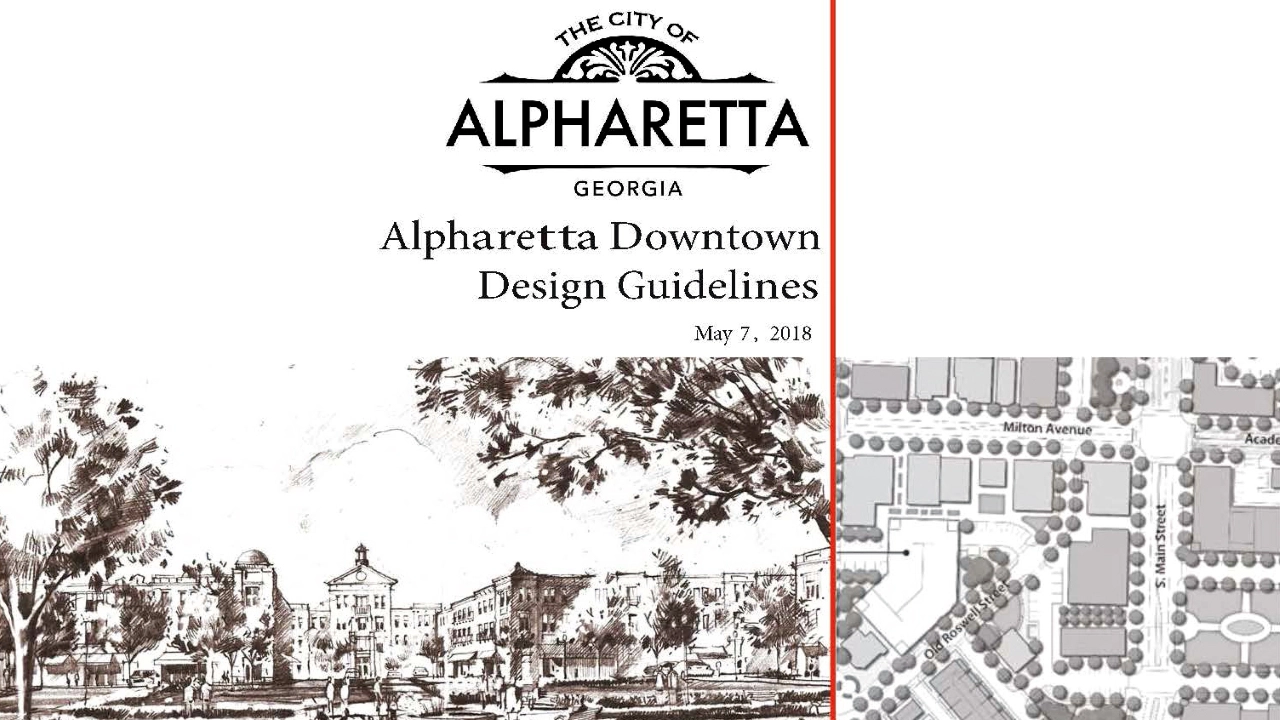Details:
Highlights:
Description:
In 2017 and 2018, TSW prepared the City of Alpharetta Downtown Design Guidelines following TSW’s successful completion of a Downtown Master Plan and zoning updates to codify said plan. The City’s three main objectives for the guidelines were to: 1) replace previous older guidelines that did not support the new master plan; 2) provide a user-guide that graphically conveys the requirements of the master plan and zoning updates; and 3) to define other “best practices” that could be used by the City’s design review board during the development review process.
The design guidelines use photos, drawings, and text to set standards for facade design, building massing, building placement, streetscapes, parking location, historic resource protection, signage, open space design, and more. The standards are not intended to be overly prescriptive and inflexible. Instead, they focus on embracing the diversity of styles, building forms, and public spaces found in traditional Main Streets throughout the United States, most of which were built during the 19th century up through the early part of the 20th century.
The guidelines are organized by the following Key Design Principles:
Since their initial adoption in 2017 and subsequent amendments in 2018, the City of Alpharetta has reviewed several dozen projects using these guidelines.

